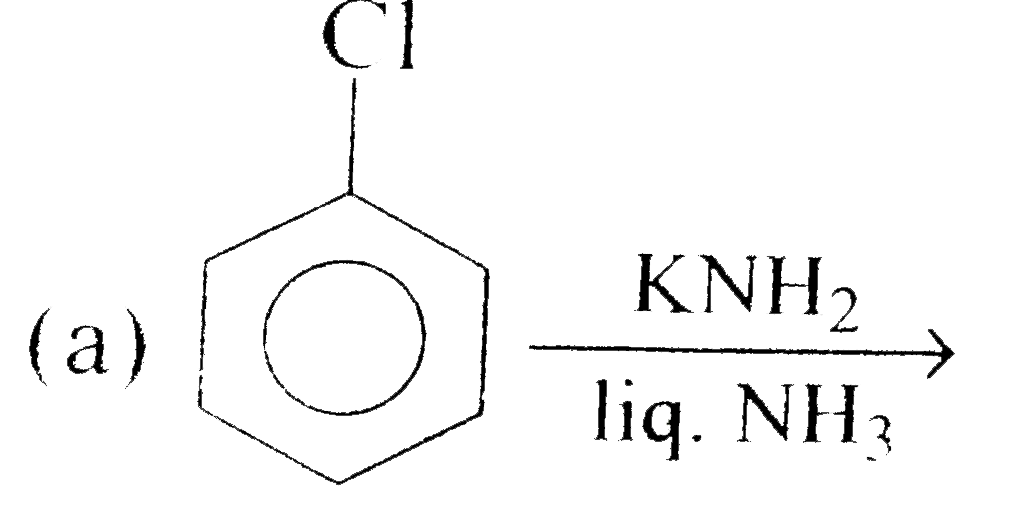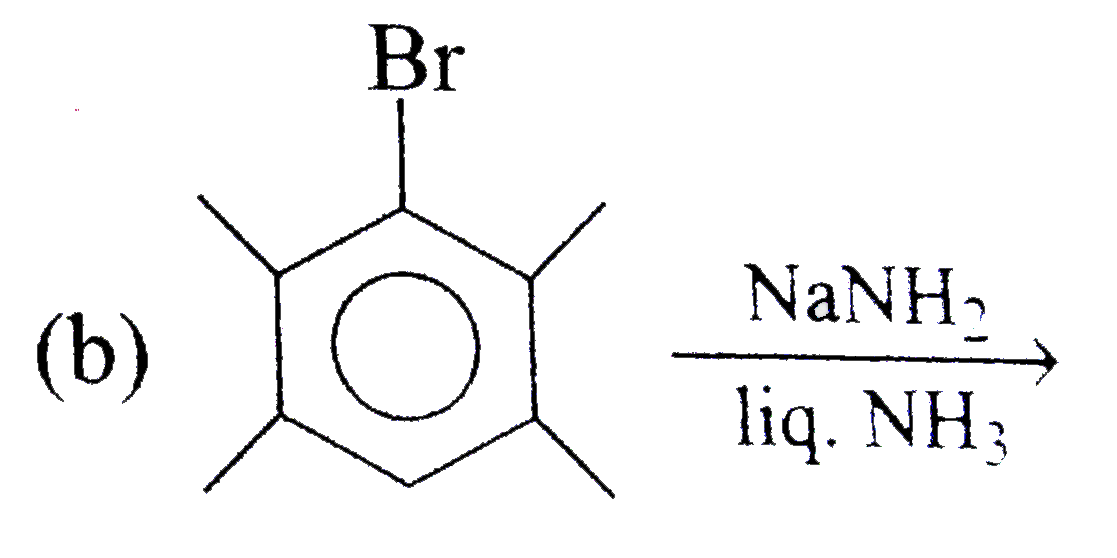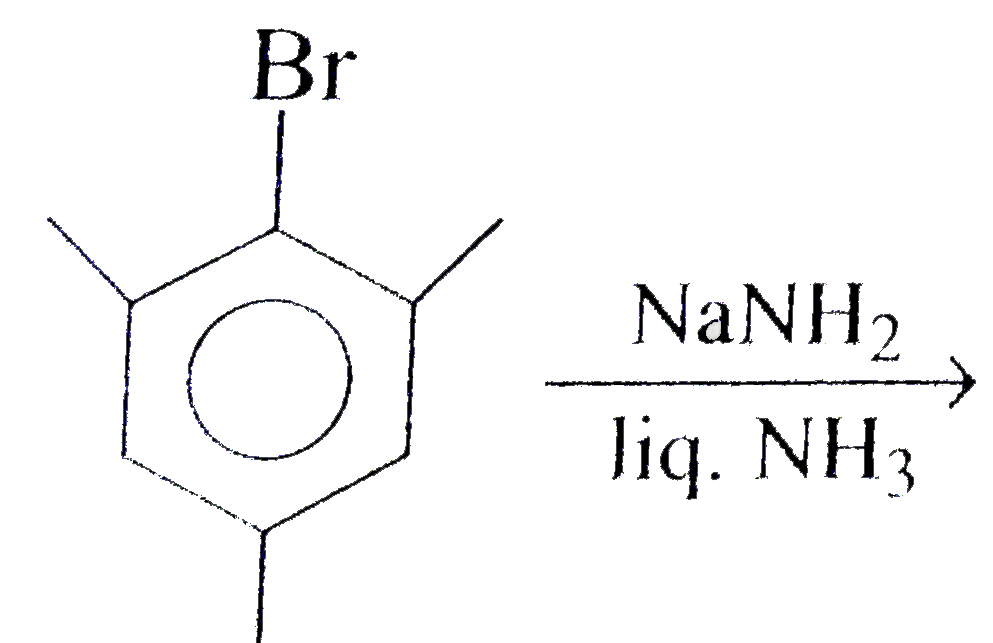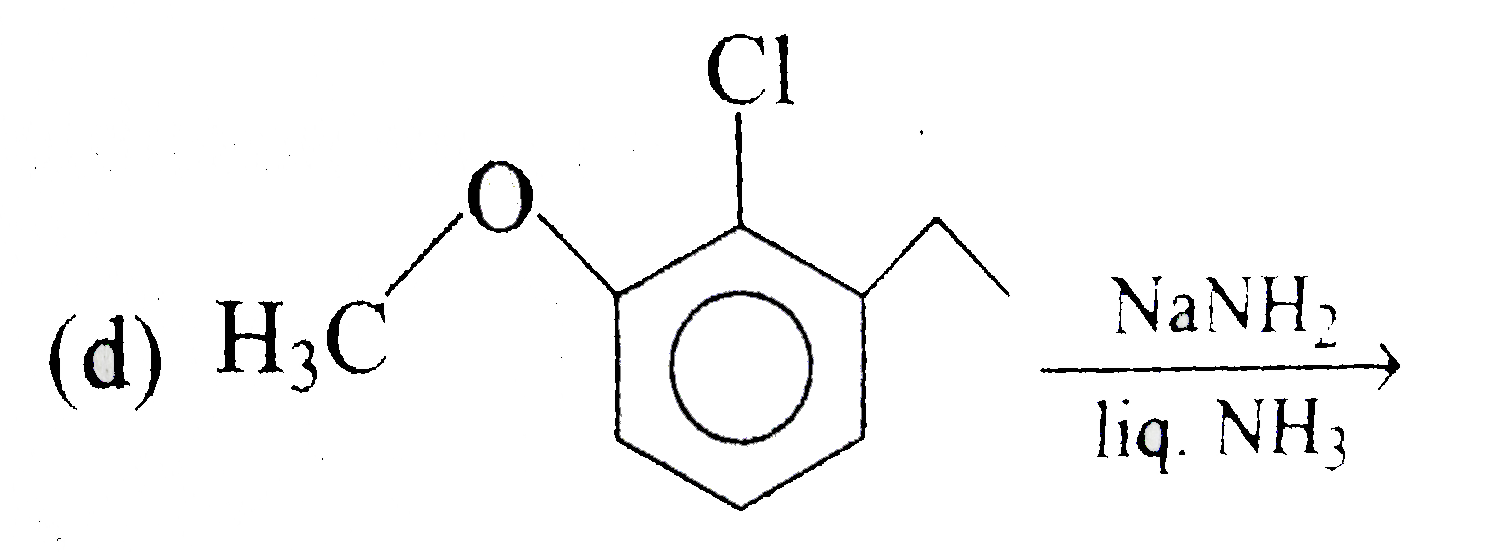Which of the following reactions are not feasible?




The correct Answer is:B, C, D
To determine which of the following reactions are not feasible, we need to analyze the reactions involving KNH2 (potassium amide) as a strong base. The key points to consider are the presence of hydrogen atoms on the beta position relative to the leaving group (in this case, the halide).
1. Identify the Reactions:
We need to look at the given reactions (A, B, C, D) and identify the structure of each compound involved in the reactions.
2. Understand the Role of KNH2:
KNH2 is a strong base that can deprotonate hydrogen atoms (H) from the beta position of the carbon chain where the leaving group (Cl) is attached. The reaction will proceed if there are hydrogen atoms available on the beta carbon.
3. Analyze Each Reaction:
- Reaction A: There is a beta hydrogen available. The KNH2 can remove this hydrogen, leading to the formation of a triple bond and the elimination of Cl. This reaction is feasible.
- Reaction B: Both beta positions do not have hydrogen atoms available for removal. Therefore, KNH2 cannot deprotonate, making this reaction not feasible.
- Reaction C: Similar to B, if there are no beta hydrogens available, the reaction cannot proceed. Hence, this reaction is also not feasible.
- Reaction D: In this case, if both beta positions lack hydrogen atoms, the reaction cannot proceed as well. Thus, this reaction is not feasible.
4. Conclusion:
Based on the analysis, the reactions that are not feasible are B, C, and D.
Final Answer:
The reactions that are not feasible are B, C, and D.
---
We need to look at the given reactions (A, B, C, D) and identify the structure of each compound involved in the reactions.
KNH2 is a strong base that can deprotonate hydrogen atoms (H) from the beta position of the carbon chain where the leaving group (Cl) is attached. The reaction will proceed if there are hydrogen atoms available on the beta carbon.
- Reaction A: There is a beta hydrogen available. The KNH2 can remove this hydrogen, leading to the formation of a triple bond and the elimination of Cl. This reaction is feasible.
- Reaction B: Both beta positions do not have hydrogen atoms available for removal. Therefore, KNH2 cannot deprotonate, making this reaction not feasible.
- Reaction C: Similar to B, if there are no beta hydrogens available, the reaction cannot proceed. Hence, this reaction is also not feasible.
- Reaction D: In this case, if both beta positions lack hydrogen atoms, the reaction cannot proceed as well. Thus, this reaction is not feasible.
Based on the analysis, the reactions that are not feasible are B, C, and D.
The reactions that are not feasible are B, C, and D.
Topper's Solved these Questions
- HALIDESBook:HIMANSHU PANDEYChapter:HALIDESExercise:Linked Comprehension Type (Q.1 To Q.25)
Explore 25 Videos
- HALIDESBook:HIMANSHU PANDEYChapter:HALIDESExercise:Linked Comprehension Type (Q.26 To Q.27)
Explore 2 Videos
- HALIDESBook:HIMANSHU PANDEYChapter:HALIDESExercise:More Than One Correct (Q.1 To Q.25)
Explore 25 Videos
- GENERAL ORGANIC CHEMISTRYBook:HIMANSHU PANDEYChapter:GENERAL ORGANIC CHEMISTRYExercise:Subjective Type Problems
Explore 19 Videos
- ISOMERISMBook:HIMANSHU PANDEYChapter:ISOMERISMExercise:Subjective Type Problems
Explore 11 Videos
Similar Questions
Knowledge Check
Which of the following reaction are not feasible?
AHC=CH+KOH→BHC≡CH+NaNH2→CHC=CH+NaOH→DHC=CK⊕+(CH3)3C−Br→Which of the following reactions are ot feasible?
AHC≡CH+KOH→BHC≡CH+NaNH2→CHC≡CH+NaOH→DHC≡(−)CK(+)+(CH3)3C−Br→Which of the following reactions is not feasible?
A(CH3CH2)2CuLi+CH3CH2C(CH3)2Br→B[(CH3)3C]2CuLi+CH3CH2CH2Br→C[CH3CH2C(CH3)2]2CuLi+CH3CH2Br→D[(CH3)2CH]2CuLi+(CH3)2CHCH2Br→
Which of the following reactions is not feasible ?
View SolutionWhich of the following reactions is/are not feasible :
View SolutionWhich of the following reactions is/are feasible?
View SolutionWhich of the following reaction is not feasible?
View SolutionWhich of the following reaction is not feasible?
View Solution